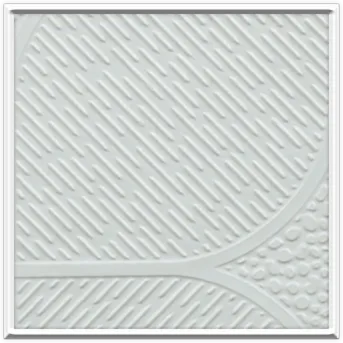8 月 . 16, 2024 20:00 Back to list
Similar Ceiling Material Options for Grid Systems and Designs
Exploring Grid Ceiling Material Names A Comprehensive Guide
Grid ceilings, commonly referred to as drop ceilings or suspended ceilings, are an essential aspect of modern architecture and interior design. These ceilings are not only functional, providing essential support for lighting and HVAC systems, but they also offer aesthetic appeal by concealing electrical wiring and ductwork. A fundamental aspect of grid ceilings is the variety of materials used to construct the tiles, each offering distinct features, benefits, and design possibilities. In this article, we will explore some popular grid ceiling material names and their applications.
1. Acoustic Ceiling Tiles
One of the most common types of grid ceiling materials is acoustic ceiling tiles. These tiles are designed to absorb sound, making them ideal for environments where noise control is essential, such as offices, schools, and auditoriums. Acoustic tiles are available in various densities, textures, and ratings, allowing for customized designs to meet specific acoustic needs. Popular brands like Armstrong and USG manufacture high-quality acoustic ceiling tiles that help improve speech intelligibility and create quieter spaces.
2. Mineral Fiber Tiles
Mineral fiber tiles, often used interchangeably with acoustic tiles, are made from a combination of natural minerals and manufactured materials. They provide excellent sound absorption, fire resistance, and thermal insulation. Available in different finishes, including smooth and textured, mineral fiber tiles cater to diverse design preferences. Their cost-effectiveness and ease of installation make them a popular choice in both commercial and residential applications.
For a modern and industrial aesthetic, metal ceiling tiles are an exceptional choice. These tiles are typically made from aluminum, steel, or copper and can be finished in various ways, including polished, painted, or matte coatings. Metal ceiling tiles are durable and resistant to moisture, making them suitable for high-humidity environments like kitchens and restrooms. Additionally, they can be easily cleaned, contributing to a hygienic atmosphere. Companies like Chicago Metallic offer a range of metal ceiling options, enhancing the visual appeal of commercial spaces.
grid ceiling material names

4. PVC Ceiling Panels
Polyvinyl chloride (PVC) ceiling panels have gained popularity due to their versatility and low maintenance requirements. These panels are lightweight, easy to install, and available in a wide variety of colors and designs. PVC ceiling panels are also water-resistant, making them ideal for areas prone to moisture, such as bathrooms and basements. They can mimic other materials like wood or stone, providing an elegant look without the associated maintenance challenges.
5. Gypsum Ceiling Tiles
Gypsum ceiling tiles are known for their fire-resistant properties and smooth surface finish. Made from natural gypsum rock, these tiles are suitable for providing a sleek and sophisticated appearance to any space. Gypsum tiles are easy to cut and install, making them a popular choice for both residential and commercial applications. They are especially favored in areas where aesthetics and acoustics are a priority, such as conference rooms and high-end office spaces.
6. Wood Ceiling Tiles
For those seeking warmth and natural beauty, wood ceiling tiles are a fantastic option. Available in various species, finishes, and styles, wood tiles can complement a range of design themes from rustic to contemporary. They not only enhance the acoustic quality of a space but also add character and charm. However, it’s crucial to consider proper treatment and maintenance to ensure durability and longevity, particularly in humid environments.
Conclusion
The choice of grid ceiling materials significantly influences the overall aesthetic, functionality, and acoustic performance of a space. From acoustic and mineral fiber tiles to the sleek look of metal and the warmth of wood, each material offers unique benefits. Understanding the various grid ceiling material names and their characteristics allows architects, designers, and builders to make informed decisions that align with their vision and requirements. Whether for commercial spaces or residential homes, selecting the right ceiling material can transform an ordinary area into an extraordinary environment.
-
Revolutionizing Interior Design with Ceilings t grid Suspended SystemNewsOct.29,2024
-
Revolutionizing Ceiling Design with ceiling access panel with Gypsum Tile WaterproofNewsOct.29,2024
-
Revolutionizing Interior Design with PVC Gypsum Ceiling: A Comprehensive GuideNewsOct.29,2024
-
Elevating Interior Design with High quality Mineral Fiber Ceiling TilesNewsOct.29,2024
-
Revolutionizing Interior Design with PVC Gypsum Ceiling: A Comprehensive GuideNewsOct.29,2024
-
Elevating Interior Design with High-Quality Mineral Fiber Ceiling Tiles: A Comprehensive GuideNewsOct.29,2024







